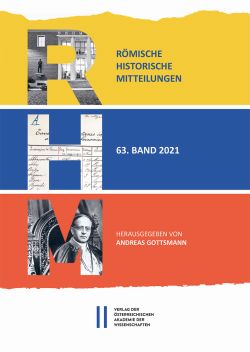
Römische Historische Mitteilungen 63/2021, pp. 37-50, 2021/11/02
This essay provides a brief description of the city of Rome around the middle of the 15th century by focusing on the most relevant aspects of everyday life as well as on the institutions, societies and economic structures that Frederick III – albeit superficially – encountered during his brief stay in Rome. The study first analyses the “city of stone”, namely the physical aspect of the city. When the emperor arrived in Rome, the city was still deeply marked by decay and abandonment as a result of the long absence of the pope and of the Great Schism. The study moves on to describe the “living city”, the socio-economic and political structure of Rome’s cosmopolitan population by highlighting the social stratification of the Roman cives (including barons, the urban aristocracy and the working class) and mainly focusing on the foreign communities living in Rome. In fact, the high demographic growth, which took place in the 15th century and whose effects were already visible around the middle of the century, is primarily due to the foreign communities settling down in the city, who used to work either within the Papal Curia or as artisans and merchants in Rome. Besides Florentines and Tuscans, the community of the “Teutons” stood out among the forenses. The Confraternity and the Hospice of S. Maria dell’Anima was their main point of reference. Its Liber Fraternitatis also contains the names of Frederick III, his wife and other personalities who accompanied the emperor throughout his journey.